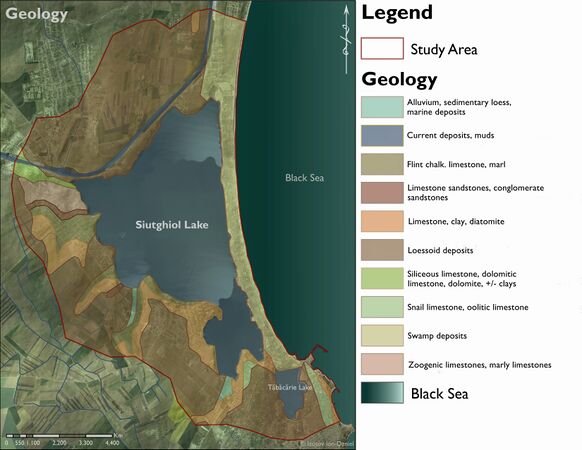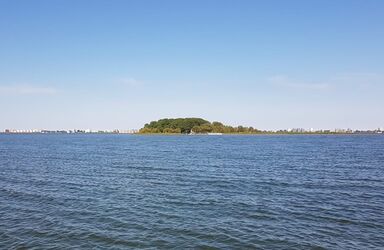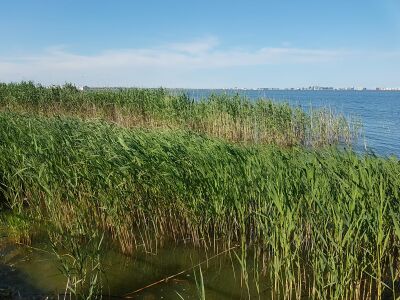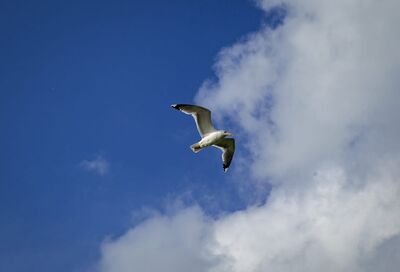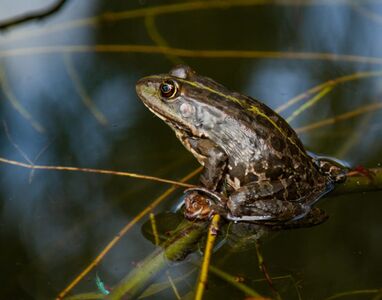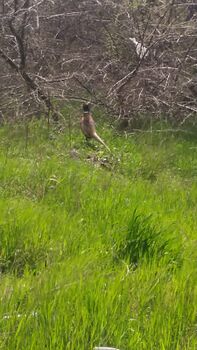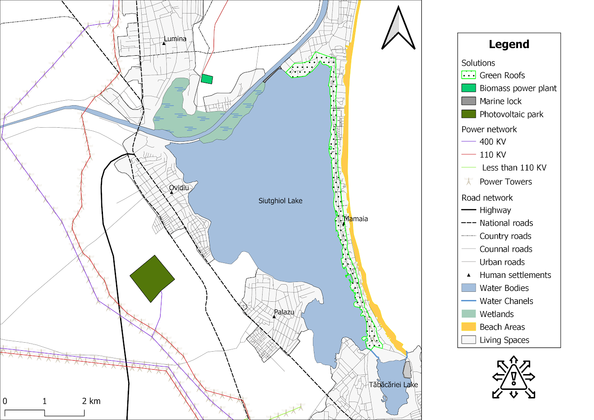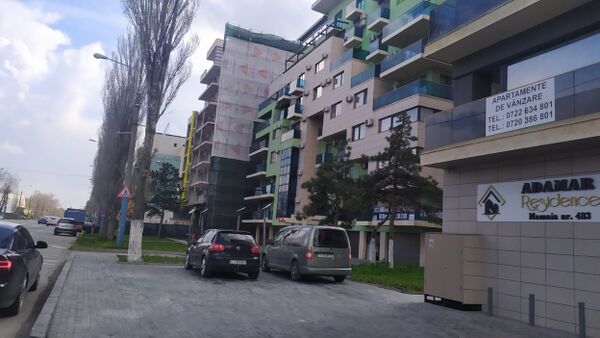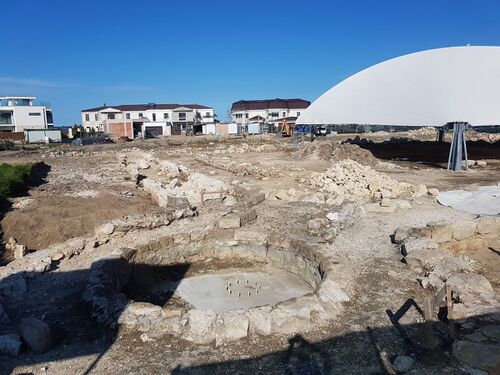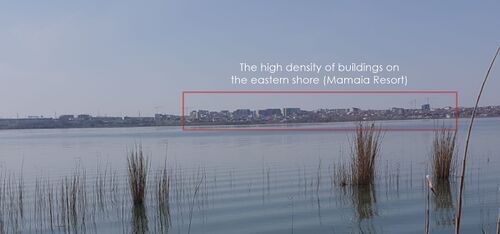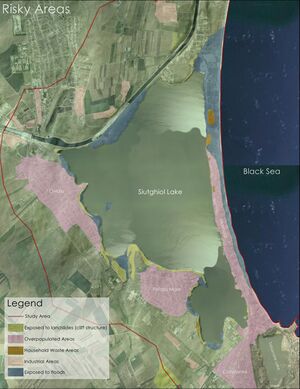Lacul Siutghiol Living Lab 2021: Difference between revisions
Ion.izotov (talk | contribs) |
Ion.izotov (talk | contribs) |
||
| Line 181: | Line 181: | ||
File:SiutghiolHouseholdWaste.jpg|''Household Waste Found on the Shore © Teodora Tănase'' | File:SiutghiolHouseholdWaste.jpg|''Household Waste Found on the Shore © Teodora Tănase'' | ||
File:SiutghiolWharf.jpeg|''Wharf in Ovidiu © Radu Niculescu'' | File:SiutghiolWharf.jpeg|''Wharf in Ovidiu © Radu Niculescu'' | ||
File:InfrastructureSiutghiol.jpg|''The Infrastructure Around the Siuthghiol Lake © Izotov Ion-Daniel'' | |||
</gallery> | </gallery> | ||
| Line 187: | Line 188: | ||
<gallery caption=" " widths="500px" heights="250px" perrow="5"> | <gallery caption=" " widths="500px" heights="250px" perrow="5"> | ||
File:BuildingDensity.jpeg|''The Buildings Density on the Mamaia Resort © Elis Sibel Safer'' | File:BuildingDensity.jpeg|''The Buildings Density on the Mamaia Resort © Elis Sibel Safer'' | ||
</gallery> | </gallery> | ||
Revision as of 14:37, 24 May 2021
>>>back to working groups overview
Rationale
As the urbanization processes have speeded up around the world, every natural element nearby the metropolitan areas often end up being sacrificed for the sake of economy purposes and Siutghiol Lake is no stranger to that. Covering an area nearly as broad as the hostile city in the south (Constanța), the lake has suffered of habitats degradation due to irrational tourism, nearby factories, illegal building procedures and lack of interest from the local administration. It is very important to preserve the area, as the lake serves as an important migratory route of the birds through the Via Pontica and the Sarmatian Route. The aim of this study is to cover every important aspect which led to the deconstruction of something that once was a hospitable environment.
Location and scope
Water as a natural system
Geomorphology, typologies and dynamics of water areas
Located in Dobrogea, northern of the Constanța municipality, Siutghiol Lake (sütgöl meaning „milk lake” in Turkish) has an area of approximately 20 km² filled with 69.6 million m³ of water (Telteu, Zaharia, 2012), reaching the depth of 18 meters (according to Gâștescu) and a 7.82 meters depth according to more recent measurements. Geomorphologically speaking, the lake used to be a bay in the past, directly communicating with the Black Sea, but because of the wave action, abrasion, accumulation, local winds and marine currents, a 300-400 meters width and 9 km long sandspit was formed, where the Mamaia touristic resort lies now.
The local depressions were shaped during the later Jurassic and early Quaternary times (100-160 million years ago) all these mainly because of the marine abrasion. These days, Siutghiol communicates with the Black Sea through Tăbăcarie Lake (which is 20 km southward) through anthropic canals. It also supplies the upper lakes of Tașaul and Corbu with freshwater through canals (some sources claim that the water supply has been stopped in the past years). Nearby the western shore of Siutgiol lies a 2.6 ha island of limestone composition named after the roman poet Pūblius Ovidius Nāsō who apparently wrote some of his poetry on this island as he was exiled, however this is just a myth to attract tourism in the area.
The most common types of water in the area tend to be overshadowed by the presence of the Black Sea, however lagoons and limans are still a very typical sight of western Dobrogea. The genesis of the lakes is natural, but some anthropic changes occurred in the past centuries for a better function of the territory (canals, dams, bridges, roads and so on) action that speeded up the urbanization process. Natural rivers in the are are rare to be found because of the lack of high geomorphological units nearby (the closest geomorphological unit to a mountain range being in northern part of Dobrogea), however there are plenty of canals including the Danube-Black Sea Canal built to shorten the trade route on the Daube River by 400 km. Wet lands can be found in the proximity of the limans and the shore and serve as a habitat for the local species, however most of them started to be replaces with parking lots, buildings or landfills (Palazu Mare). In Tăbăcărie Lake, a part of the wastewater of the city of Constanța is discharged, which obviously led to mass losses of the natural biotope in the area as many birds species don't stop by the lake anymore on their migratory route.
Despite the fact that most of the water supplies in the Romanian lakes come directly from rainfalls or rivers, the main input of the western Dobrogean lakes are the groundwaters which allows the water level to be stable all year round, even if they're no longer connected to the Black Sea. The bedrock of Siutghiol is mainly formed from karst which allows an optimal interaction with the groundwaters. There are no tributaries as most of the rivers in this region drain directly in the Black Sea or the Danube. The lack of annual precipitations (around 400 mm) aren't enough to supply the Siutghiol Lake with freshwater at a constant rate, so other sources are needed.
The floodplain area is extended in the southern part of the Constanța Municipality, but when it comes to the Siutghiol Lake, the Mamaia Sandspit is the most vulnerable area to floods alongside the northern shore of the lake, where the slopes are low to non-existing. However, because of recent rehabilitation efforts (dams construction, tetrapods, etc.) the flood chances are very low as long as the ocean level remains stable. The Siutghiol’s catchment areas is estimated to cover an area of 71.6 km².
Due to the different water flow input in the local lakes and the anthropic needs that arose in the use of these lakes after 1950, several connecting canals were built between these lakes. Thus, through these canals, water transfers take place from Siutghiol Lake to Tăbăcăriei and from it to the sea, and also from Siutghiol through a pipeline to Tașaul. Subsequently, due to the increase in water consumption in Siutghiol and the regulation of leaks between Tașăul and Gargalâc and discharges into the sea (for Lake Gargalâc) this pipeline was closed in 1967. Level variations and climatic characteristics are very well reflected in the hydrological balance of Lake Siutghiol as over the years, the average lake level fluctuated from 115 cm to 225 cm and even more during the flood event.
Because of the relatively low elevation level, especially in northern part of Dobrogea, floods have been common for most of the time. However, as the time passed by and humanity developed engineering systems to stop the flooding phenomena to occur, the incidents slowed down or stopped. The lack of precipitations in the area also comes close by regarding this matter. For preventing future possible floods and the erosion caused by the waves action and by marine currents, the local administration has placed tetrapods near the shore in the proximity of human settlements. Despite all of this, because of the heavy rainfalls that sometimes occur in the region during the summertime, back in 2004 the people living nearby the coast have experienced floods for one day (28 August) and no other significant flood has been reported ever since. The only regions exposed to this matter are far from human settlements (at least in the southern Dobrogea). The plateau's geomorphological features prevent the city from experiencing such unfortunate events. However, the study area is more vulnerable to this due to recent climate changes and rise of the world oceans level which will affect the Black Sea as well, despite being a relatively guarded sea. The bay barrier of Mamaia is flat and doesn't even reach 2 meters height so it is very likely that in the future it might get back underwater if no action is taken.
Water as a living space
By implementing the Natura 2000 network in Romania, Siutghiol Lake became a protected area- code ROSPA0057.
The Ministry of Environment is responsible for the management of this site, through the National Agency for Protected Areas. Currently, there is no managament plan for the lake but even if it is not mandatory to have one, its absence contributes to some serious management and conservation problems.
The Romanian Ornithological Society assigned the lake as an IBA according to the following criteria ellaborated by BirdLife International: C1, C2, C4.
During the migration season, the lake hosts more than 20.000 aquatic birds, thing that makes it a possible candidate for RAMSAR.
Siutghiol Lake houses important categories of protected species: 32 species mentioned in The Birds Directive-Annex 1, 43 migrating species listed in the annexes of the Convention on Migratory Species (CMS) and 4 globally endangered species.
Habitats: N06- continental freshwaters, N07-wetlands N23-artificial land
Siutghiol Lake is a lagoon with a particular economic (industry and agriculture), therapeutic and touristic importance. Because of the intense anthropic activity through tourism, water sports, fishing, road traffic and inhabited areas (Mamaia Resort, Constanta, Ovidiu) there is a great negative impact on the lake`s flora and fauna.
The greatest danger the lake faces is the pollution. Some ways of polluting are the artificial water intake from the Poarta Alba-Midia Navodari canal, the artificial water intake through the sewerage network (wastewater treatment plants, pumping stations and water channels) and artificial water leaks that enter the lake through tributary valleys. Some other causes of the biologicaly distress of the lake is the growing human population and urban development, abusive fishing, intensive road traffic, hunting and touristic activities.
Because of these reasons, the terrestrial bird species that used to live near the lake and are protected by the Natura 2000 network do not have favorable habitats anymore.
Fish movement from Siutghiol Lake to Tabacarie Lake and back is not restricted by anthropic elements. The life of fish is still affected by water pollution and street lights which influences their behaviour.
Electrometric measurements and underwater research in the area showed the existence of some strong water sources under the lake. The lake is supplied with fresh water by 3 underground springs with a great flow which keep the water of the lake clear. The water quality of the lake fits in the legal limits approved. The absence of these springs would prove how polluted the lake is by people.
Blue and Green Infrastructure
In order to be able to understand the term BGI (Blue and Green Infrastructure ) within the study area, we must take into account the current network of the green infrastructure of Constanta and Mamaia resort. The elements that have a major potential in a green-blue infrastructure are green, eco-friendly landscapes such as green areas, especially parks with favorable vegetation for the climatic conditions and technologies whose main purpose is to reduce the consumption of industrially produced, obsolete and polluting energy. These green areas are buffer areas, which ensure the integrity of natural habitats. At the moment, from ours point of view , the chaotic extension of the built space and the destruction of the natural areas are driving the blue green infrastructure in a critical point. And this is all because there is no specialized management to deal with this problems, or with the implementation of new projects which could target reconversion solutions for current buildings and functional spaces.
Water as a cultural space
Land use and water
It's safe to say that the study area covers a wide variety of land and water use. Around the lake, the urban areas take the most part of the land and serve as either a residential purpose (Ovidiu, Palazu Mare, Constanța) or an entertainment one (on the eastern shore - Mamaia). There are some very small green urban areas which count the most to the total green region. The industrial or commercial units sit in Siutghiol's proximity as well and as mentioned before, some of their waste is disposed in the lake with little to none consequences. As for the natural side, there are a few inland marshes which don't cover a big part, a little area dedicated for pastures, the Danube-Black Sea Canal in the north and a transitional woodland-shrub area. Right before the northern entrance to the Constanța Municipality, there is a mineral extraction site which is still exploited to this day. The rest of the area is covered by the agriculture branch which extents to the nearby cities and it's a common sight in Dobrogea. The road network is not as developed as you would expect, but it is definitely present as the A2 Highway (also known as The Highway of the Sun) crosses the west side of the lake.
The forest zones are far gone as you can barely find any trees within the study area (there are a few between Ovidiu and Palazu Mare or in the green urban areas) and not because of the climate type or soil compositions, but because of high deforestation actions in the past decades. Some industrial units don't work anymore and there is a changing tendency to commercial units instead. The wild beaches that once were on the sandspit were replaced by the touristic resorts which is constantly expanding. The land and water use will definitely change in the near future as the urban areas extend in a worrying manner and the agriculture is slowly fading away. Authorities will most likely use every inch of the coastline if no action is being taken anytime soon. Despite its natural genesis, the Siutghiol Lake has definitely met high anthropic interventions as the time passed by and you can see its older days remains only in a few places now.
Cultural and spatial typologies of water areas
With the formation of the Mamaia estuary, due to the closure of the Black Sea bay, along it, on one side and on the other, numerous constructions appeared. On the side with Lake Siutghiol, a series of hotel and restaurant units were built, as well as recreational areas. From the perspective of the natural environment, Siutghiol evolved at the same time as Lake Tăbăcăriei, contributing to its supply of water, through the canal that connects them. The presence of the lake favored the development of the tourist infrastructure, due to the landscape it offers, but it also influenced the urban configuration of the city, by building residential centers and by developing the street plot. Regarding the cultural part of the region, it is found only in the campus area, through the presence of Ovidius University, and in the area of Mamaia Resort, on the lake side, these characteristics are missing, but are offset by those on the sea side, where there is a casino.
In general, water areas create attractive points at the level of a city, as they are the main agreement area for citizens. As an example for the city of Constanța, we are talking about Lake Siutghiol and Lake Tăbăcăriei. If we look at the water area as an essential resource for development, Lake Siutghiol has been an important area since the distant past, on the shores of which various buildings have been erected, both residential, commercial, recreational, cultural and sports areas. Lake Siutghiol plays an important role in the urban development of the city, as it offers the possibility to carry out activities for leisure and relaxation, such as fishing, walks around the lakes and boat trips. The increasing accentuation with built spaces, of the area between Siutghiol Lake and Mamaia Boulevard creates the idea that the place is not for people, because the investors who did not take into account the demographic side of a city.
Sacred spaces and heritage
The Black Sea coast has been occupied by many civilizations over the time (Greeks, Romans, Ottomans and so on) so there is no surprise that they left a generous cultural heritage behind them. There is no well preserved archaeological site around the Siutghiol Lake, however you can still find some Paleolithic settlements in Mamaia Sat and Ovidiu that are set to be exposed soon by the archaeologists. You can also find a Roman-Byzantine fortifications on the western side of the lake, on a small promontory of the Ovidiu city and another one in Palazu Mare. There are no sites on the Mamaia sand-belt discovered most likely because it is a relatively new geomorphological formation and there was no point in building settlements on vulnerable and exposed land.
The irrational tourism, lack of investments into national cultural heritage preservation and misguided excavation actions by unqualified staff lead to the sites being forgotten in the local touristic routes and little to no attention is given to them. Because the cultural heritage is unable to recover once damaged, any rehabilitation action done by the archaeologists is highly restricted. The archaeo-tourism (tourists who practice thematic cultural routes) is often overshadowed in Dobrogea by the other local sights such as the Danube Delta and Măcin Mountains in the north, or the resorts in the south. However, despite not living on the high profile, it emerges only when it's needed to and if the right effort is put into it, then it can serve as a great economic resource to the community.
Visual appearance and landscape narrative
Miron Costin claims the existence of a lake in the counties near the Dniester river, called either Owidowo, Vidovul, Ovidiului Lake, Lagoul Ovidouloui, Vidovo Lacus, Ovidovo Lacus or Vidovo Lake in different cartographical documents from various centuries. Many chroniclers, writers and poets have been writing about the Siutghiol Lake since the 16 th century. The lake was often mentioned in historic documents as well as travel guides and poems. Those who wrote about the lake often associated it with the name of the roman poet, Pūblius Ovidius Nāsō because, as the legend says, he was exiled by Emperor Augustus in 8 AD on a small island (Ovidiu island) located in Siutghiol Lake.
- 16th century: Stanislaus Sarnitius, Description of Russia, Poland and Livonia;
- 17th century: Miron Costin, The Polish Chronicle - claims the existence of a lake in the counties near the Dniester river, called either Owidowo, Vidovul, Ovidiului Lake, Lagoul Ovidouloui, Vidovo Lacus, Ovidovo Lacus or Vidovo Lake in different cartographical documents from various centuries;
- 1802: Le Moniteur, Paris;
- 1836: Gheorghe Asachi, Ovid`s lake;
- 1885: Bruno Amante, Ovid in exile;
Local legend: Once upon a time, where you can find Siutghiol Lake nowadays, there was a village full of bad people. Strangers were not welcomed there. On a festive day, when the villagers were celebrating in their homes, a man sneaked into the village. He asked many people to be let to stay overnight but without success. Seeing that no one is welcoming him, he decided to head to the edge of the village. He found there a small house made of stone where an old woman lived. She, unlike her neighbors, was kind and let the stranger stay as long as he wished to. The old woman was worried as she did not have anything to feast the man with. The traveler told her to put some manure in the furnace and so she did. The woman was astonished when she opened the furnace door as she found there an enormous bread that would become whole again after each bite. The next day, as the traveler left, water came out of nowhere and the village sunk. Everything was gone. Only the stone house remained and a crystal-clear lake formed.
The water is the central focus of this area along with the flora and fauna that depends on it on a long term, like the local plants and animals do, as well as on short-term, like the migratory birds that nest in this area.
Sunset On Lake Siutghiol © Ana Maria Guta
Water and People
Accessibility and usability
The main access routes to reach the Siutghiol Lake by car are the Ovidius University campus in the south, , the whole Mamaia and Aurel Vlaicu Boulevard – not to mention the open space sand barrier where the Mamaia Resort lies - plus secondary thoroughfares such as Ovidius University, Jade and Border Alley, as well as other unmarked roads or natural ones. As mentioned before, the Siutghol Lake is accessible in certain areas such as the Mamaia Resort, or - on the southern shoreline - by Aqua Magic, part of the area near the Ovidius University. But the accessibility can also refer to areas where the lake can be admired in all of its glory, with or without the built infrastructure to serve the tourists such as hotels or restaurants. In terms of spatial obstacles, the constructions in general prevent the development of other activities along the lake shore - a matter easily noticed on the eastern coast where the buildings density is higher than it should be. Also, the lake has certain areas in Mamaia where it is not organized at all and presents possible dangers to the local biodiversity because of the household wastes.
The area of the Siutghiol Lake is mainly used by the local investors, who want to extend the resort as much as possible, in order to exploit the area economically. Of course, tourists are a common typology to be seen around the lake. Lately, this area has been used intensively for the development of mass tourism, by building hotels, restaurants, parks and other touristic sights. Another purpose for which this area is used is for leisure, boat trips, water sports, and in addition to these, fishing also takes place, an activity practiced by both amateurs and professionals. The area of Lake Siutghiol, belonging to the resort of Mamaia is used to own the JT Watersports water park, and it’s open only during summertime, next to being located the only floating restaurant in Mamaia, which is under construction. On the Ovidiu Island not many things are going on, there is a little restaurant and a wharf for the tourists.
Community Mapping
What is to be mapped here?
- Social groups from within the community, for example the youth, kids, students, parents, the retired etc. Typically, these groups have specific needs, which you can also make explicit on the map. These people might not be organized in any way, but they are usually present in the context you are observing
- Local stakeholder groups: these groups are organized in one or the other way. They only exist within the community context you are observing. For example: the local community center, local churches, local interest groups, the landowners, small businesses and retailers
- External stakeholder groups are not necessarily present in the environment you are observing, but they may have strong stakes and interests. These can be local authorities, politicians, associations, care services etc.
- For each group, you may identify their needs, objectives, power and capacities
- You may also identify gaps and power conflicts
- Please try to redepict these elements in an integrated way and in relation to your water landscape. What is the relationship between these groups? Are they close or distanced from each other? Who is more powerful? Which voices are hardly heard? Do they have any shared concerns?
- Your case your community map1.jpg
add a caption
- Your case your community map2.jpg
add a caption
- Your case your community map3.jpg
add a caption
Possible Futures
For the risks map, we took into consideration five main problems that occur within our study area. The most negative part found here is the overpopulated shore of the lake on the eastern side where the Mamaia Resort is located, full of high buildings which are full with tourists during summertime. In the southern part there is the Constanta Municipality which also impacts the lake's ecosystem because of the huge amount of cars crossing the lake every day.
All this high population density leads to another problem in the area which is the household waste found at nearly every corner. A few volunteering institutes (one of them being the Ovidius University itself) have cleaned some of the areas, however the garbage always gathers overtime because of the lack of education.
The industrial areas around the lake are also a top contributor for the pollution as there is little to none governmental action to ban the waste disposal from the factories in the water. Some other risky factors might include things like the possible landslides that might occur because of the common cliff structures and the areas exposed to floods which, so far, are not put in danger, however considering the climate change and the rise of the ocean level, this might be a problem that the locals might will face sooner than anticipated.
As for the future potential map, we took into consideration the implementation of green roofs on the Mamaia sand-belt since the buildings density is already high, a biomass power plant in the north which basically burns waste and makes eco-energy in the process, a lock also in the north for possible floods and a photovoltaic park between Ovidiu and Constanța which would supply both locations with solar energy for as much as it can provide, especially during summertime when the tourism is at its peak.
This diagram refers to the forces (driving forces) which manifest a pressure above the living state of an natural system. This pressure result in an impact which is mostly bad and his main result is to destroy the natural resilience. The main driving forces which take place in this area are the political environment with his legislation, the process of energy consumption, the tourism, farming and the industry. This forces shapes the areal and forces it at some great pressure. The pressure domain , as you can see in the graph is formed by the uncontrolled expansion of the built space, poaching, lack of green infrastructure and the exhaustion of the natural resources. These are a few examples, the most relevant and the most visible things you can discover with your own eyes in the surroundings of the Siutghiol Lake and in the city of Constanta.
Regarding the state of the lake, first of all, Siutghiol is included in the category of Natura 2000 protected sites, being a lagoon, whose water is fresh. It has an alkaline pH, between 8 and 9, and in terms of phosphorus content, which has a tendency to increase, the lake tends to become eutrophic. It is known to have 31 species of protected birds , both nesting and migratory.
Anthropic activities always have an impact on nature and biodiversity because people change the place where they live as they please. The most important impacts resulting from the pressures are pollution, caused by the uncontrolled expansion of buildings and the lack of green infrastructure. Reduced biodiversity, the growing number of buildings has negative effects on the life of the species, but poaching is a determining factor, their amount of light is reduced and their habitats are destroyed. Increasing resource consumption is an important impact, as it reduces the natural environment and habitats of the species present. However, the big problem is exceeding the support capacity of the environment and decreasing the optimal standard of living, which influences both the environment and the population.
In terms of solutions, surveillance of the area with cameras and drones can solve the problem of poaching, reconversion programs of existing buildings in some that include green infrastructure, such as green roofs, can reduce the lack of clean infrastructure, but also reduce pollution in a small measure.
Green City - is a positive scenario for the lake`s neighborhood, which involves the use of solar panels, forest cords, green roofs and wind farms around the lake. It`s a good idea to develop the shores of the water in an eco style.
Urbanization - this is a negative scenario, which involves a high urbanization, in particular on the east shore, in Mamaia and Năvodari. This constructions, extended irrational, will lead to a huge anthropogenic pressure on the fauna and flora.
Invasive species - this has also a negative impact on the faunal and floral balance, and in this case, our water landscape will have big problems with the support of life.
Drought-the lake dries up - If this happens, all species who live here, both in waters of the lake and on its shores will disappear. That can be the end of our water landscape and, after all, the desertification process will reach high levels in this area.
Floods - a natural hazard, which happens time to time in all over the world, in some particular conditions. This scenario will lead to water pollution and also will cause serious damage to agriculture and settlements near the lake.
Nuclear explosion - which is probably the worse case scenario for the entire region, including our lake. We all know what happened to Chernobyl, in 1986, where hundreds of humans and also animals died after the exposure to the radiation, and this process can continue many years after the explosion moment.
Collaborative Goal Setting
- Define strategic planning objectives based on the evaluation findings from your analysis
- Ideally, involve the community of your living labs into this process
- Link back to your original targets from section one and the Development Goals
- 150 words text contribution
Spatial Strategy and Transect
- translate your strategic goals into a vision
- develop a spatial translation of your vision
- exemplify your vision in the form of a transect with concrete interventions
- add map(s) and visualizations
- Your case spatial translaton vision.jpg
add caption here
- Your case transect.jpg
add caption here
- Your case transect detail1.jpg
add caption here
- Your case transect detail2.jpg
add caption here
From Theory of Change to Implementation
- For implementing your vision: Which partnerships are needed? Which governance model is required?
- Who needs to act and how? Draw and explain a change/process model/timeline
- Which resources are needed? On which assets can you build?
- add 150 words text and visuals
References
- Arpenti, M.B., Pirjol, T.N., Ehlinger, T.J., Paraschiv, G.M., Tofan, L. (2014),Heavy Metal Content Analysis of Siutghiol Lake Water and Sedimen, Revista De Chimie, București.
- Gâștescu, P., Brețcan. P. (2003) Aspecte Privind Starea Actuală a Lacurilor Siutghiol și Techirghiol, Analele Universităţii „Valahia”, Seria Geografie, Târgoviște.
- Gâștescu, P., Brețcan. P., Teodorescu, D.C. (2016), The Lakes of the Romanian Black Sea Coast. Man-Induced Changes, Water Regime, Present State, Romanian Journal of Geography.
- Păsculescu, C.E. (2011) Aspects Regarding The Variability of the Levels of Siutghiol and Tăbăcărie Lakes, Present Environment and Sustainable Development, Vol. 5, no. 1, Bucharest.
- Telteu, C.E., Zaharia, L. (2012) Morphometrical and dynamical features of the South Dobrogea lakes, Romania, Elsevier, Bucharest.
- Catalogul Habitatelor, Speciilor și Siturilor Natura 2000 în România (2013) , Fundația Centrul Național pentru Dezvoltare Durabilă, București.
- Planul de Management al Riscului La Inundații (2014), Administrația Bazinală de Apă Dobrogea-Litoral.
- https://biodiversitate.mmediu.ro/rio/natura2000/static/pdf/rospa0057.pdf
Process Reflection
- Reflect in your intercultural and interdisciplinary team on the outcomes of your study
- Which limitations were you facing?
- What have you learnt from each other?
- What did you learn in the Living Labs?
- What would you do differently next time?
- You can also use diagrams/visuals
- 250 words text

